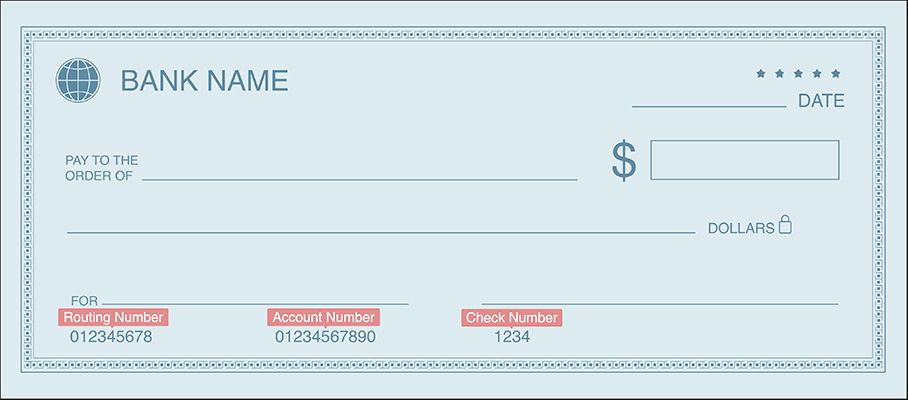Need to withdraw cash from your bank account? Here’s how to do it quickly, securely, and without extra fees.

Whether you need cash for daily expenses, unexpected bills, or just prefer having physical money on hand, knowing your withdrawal options is essential. Banks offer several ways to access your funds, each with its own limits, potential fees, and security considerations.
This guide breaks down the best methods for withdrawing money, tips to avoid unnecessary charges, and steps to keep your account secure.
Best Ways to Withdraw Money From Your Bank Account
There are several ways to withdraw money from your bank account. The best option depends on how much cash you need, whether you want to avoid fees, and what’s most convenient for you.
Here’s a quick comparison of your main withdrawal options:
| Method | Typical Limits | Fees | Best For |
|---|---|---|---|
| ATM | $300–$1,000/day | Possible out-of-network | Quick cash access |
| Bank Branch | No legal limit | None | Large withdrawals |
| Check to “Cash” | Varies by bank | None | No debit card access |
| Cash Back at Stores | $20–$200 per transaction | None | Small, convenient withdrawals |
| P2P Transfers | App-dependent | Instant transfer fees | Sending cash to someone for pickup |
Now let’s take a closer look at each method, including when to use them and how to avoid extra costs.
ATM Withdrawals
ATMs are one of the quickest ways to withdraw cash. You can use your debit card to access your funds 24/7, but banks usually limit the amount you can withdraw per day—typically between $300 and $1,000.
Withdrawal limits: If you need more than your daily limit, you may have to visit a bank branch or request a limit increase from your bank.
Out-of-network fees: Using an ATM that isn’t affiliated with your bank may come with extra fees. However, there are several ways to avoid ATM fees. Some banks also reimburse these fees, so check your account benefits.

Need cash without ATM fees?
SoFi gives you fee-free access to 55,000+ ATMs worldwide and up to a $300 sign-up bonus when you open a new account.
Teller Withdrawals
Visiting a bank branch allows you to withdraw larger amounts and handle transactions that an ATM can’t process. You’ll need to fill out a withdrawal slip and show identification.
When to use this method:
- If you need more cash than an ATM allows.
- When requesting a cashier’s check or money order.
- If you don’t have a debit card or online banking access.
Writing a Check for Cash
If you have a checking account, you can write a check payable to “Cash” and present it to a teller for withdrawal. This method is useful if you don’t have your debit card but need cash from your account.
Important considerations:
- Some banks limit the amount you can withdraw via check.
- If you lose the check, someone else could cash it, so use this method carefully.
How to Withdraw Cash From Online-Only Banks
If your bank doesn’t have physical branches—like Chime, Ally, or Varo—you still have several easy ways to get cash:
- Use in-network ATMs: Most digital banks partner with ATM networks like Allpoint or MoneyPass. Stick to these to avoid withdrawal fees.
- Get cash back at stores: Use your debit card to get cash back when making a purchase at participating retailers. There’s usually no fee.
- Transfer to a linked external account: Move money to a traditional bank account where you can withdraw cash in person.
- Use cardless withdrawal features: Some mobile banking apps let you access ATMs without a debit card by using a code or QR code in the app.
Before you travel or need a large amount of cash, check your bank’s ATM locator and withdrawal limits to avoid surprises.
Other Ways to Get Cash Without Visiting a Bank
If you don’t have access to an ATM or a bank branch, there are other ways to withdraw money from your account.
Cash Back at Checkout
Many grocery stores, pharmacies, and big-box retailers allow you to get cash back when making a purchase with your debit card.
Benefits:
- No extra fees, unlike some ATMs.
- Convenient if you’re already shopping.
Limits:
- Stores usually cap cash back at $20 to $200 per transaction.
- Some retailers require a minimum purchase amount.
Cash Access Through Payment Apps
Apps like Venmo, PayPal, and Zelle let you send money from your bank account to another account, where it can be withdrawn in cash.
How this works:
- Link your bank account to a P2P app.
- Transfer money to a trusted friend or family member.
- They can withdraw the cash for you.
Things to watch out for:
- Some services charge fees for instant transfers.
- Once the money is sent, it’s hard to reverse the transaction, so only send funds to people you trust.
See also: How to Transfer Money Between Bank Accounts
Withdrawal Limits by ATM, Branch, and Account Type
The amount of cash you can withdraw depends on where and how you’re withdrawing it. Banks and ATMs have different rules, so it’s important to know your limits and what to do if you need a larger amount.
Bank Withdrawal Limits
There’s no set legal limit on how much money you can withdraw from a bank branch, but banks have their own policies.
- For large cash withdrawals: Banks are required to report cash withdrawals over $10,000 to the IRS.
- Advance notice may be required: If you need a significant amount, like $20,000 or more, call your bank ahead of time. Some branches don’t keep large sums of cash on hand and may need to order it.
- You may be asked questions: Banks might ask why you need the cash, especially for very large withdrawals. This is part of fraud prevention efforts.
ATM Withdrawal Limits
Most banks and credit unions set daily withdrawal limits for ATMs, usually between $300 and $1,000. These limits help prevent fraud and ensure ATMs don’t run out of cash.
- Need more than your ATM limit? You can make multiple withdrawals over several days or visit a branch to request a higher limit. Some banks allow temporary limit increases if you ask.
- Out-of-network ATMs may have lower limits: If you use an ATM from a different bank, your withdrawal limit might be lower than what your bank allows.
What to Do If You Need More Cash
If you need more than your bank or ATM limit allows, here are your options:
- Visit a bank branch to withdraw a larger amount in person.
- Use multiple methods—for example, withdraw some cash at an ATM, then get more through cash back at a store.
- Call your bank and request a temporary increase on your withdrawal limit.
How to Withdraw Money Safely and Avoid Fraud
When withdrawing money, security should always be a priority. Criminals use tactics like skimming devices and phishing scams to steal banking information. Follow these steps to keep your money and account safe.
Avoid ATM Skimmers
ATM skimmers are small devices placed over card readers to steal your debit card details. To protect yourself:
- Use bank-affiliated ATMs: ATMs inside banks or well-lit areas are less likely to have skimming devices.
- Check the card reader: If it looks loose, misaligned, or has extra attachments, don’t use the machine.
- Cover the keypad: Always shield your PIN when entering it to prevent hidden cameras from capturing it.
- Enable contactless withdrawals: Some banks offer cardless ATM withdrawals through their mobile apps, reducing the risk of skimming.
Protect Yourself from Phishing Scams
Phishing scams trick people into revealing personal information through fake emails, texts, or calls. Scammers often pose as your bank to steal login details or request fake withdrawals.
- Never click on suspicious links: Banks will never ask you to verify your account via email or text. If in doubt, visit your bank’s website directly.
- Ignore urgent withdrawal requests: If you receive a message claiming you must withdraw money immediately to prevent fraud, call your bank to verify.
- Enable two-factor authentication (2FA): Adding an extra layer of security can prevent unauthorized access to your online banking.
Set Up Withdrawal Alerts
Most banks allow you to receive instant alerts when a withdrawal is made from your account. These notifications can help you catch fraudulent transactions early.
- Activate text or app notifications for ATM and in-person withdrawals.
- Set spending and withdrawal limits to prevent unauthorized transactions.
- Review account activity regularly to spot suspicious transactions before they become a bigger problem.
Use Biometric Security Features
Many banks now offer biometric authentication for secure access to accounts and withdrawals. If available, consider enabling:
- Fingerprint or facial recognition for ATM and mobile banking access.
- Voice recognition for phone banking as an added security layer.
By taking these steps, you can reduce the risk of fraud and ensure that your withdrawals are secure.
Frequently Asked Questions
Can I get ATM fees refunded?
Some banks refund ATM fees, especially for premium accounts or customers who meet balance or deposit requirements. Check your account terms or contact customer service to see if you’re eligible.
What if I lose my debit card and still need cash?
You can still access your money by visiting a branch with your ID, using cardless ATM options via your bank’s app, or transferring funds to a trusted person through a payment app.
Can I withdraw money from a joint account without the other account holder?
Yes, both account holders have equal access to the funds and can withdraw money without the other’s permission. If needed, set up alerts to track withdrawals.
How can I withdraw cash while traveling internationally?
Use ATMs that partner with your bank to avoid high fees, and check your daily withdrawal limits. Notify your bank before traveling to prevent fraud alerts from blocking transactions. There are some great debit cards for foreign travel that don’t charge foreign transaction fees or reimburse you for them.
Can I send someone to the bank to withdraw cash for me?
Only if they’re an authorized signer or have power of attorney. Most banks won’t let someone else withdraw money from your account without formal authorization, even if you give them your card or a note.



